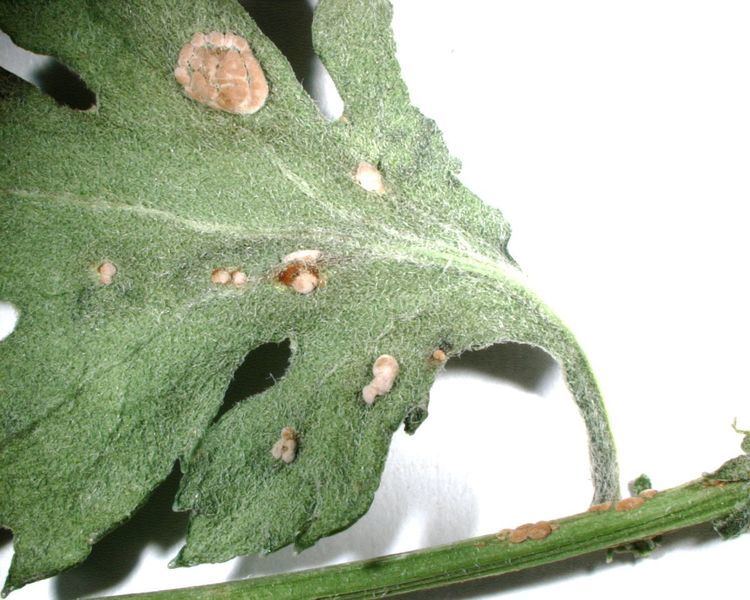Kingdom Fungi Class Urediniomycetes Family Pucciniaceae | Phylum Basidiomycota Order Uredinales Genus Puccinia | |
 | ||
Chrysanthemum white rust is a disease of plants caused by the fungus Puccinia horiana that infects species of the genus Chrysanthemum.
Contents
Origin and Spread
Chrysanthemum white rust was first identified in Japan, although it is now established throughout Asia, Europe, South America. It has been found in the United States, Australia, and New Zealand on several occasions, but early detection and eradication efforts have prevented the disease from becoming established in these countries.
Symptoms
Plants infected by chrysanthemum white rust exhibit spots on the upper surfaces of leaves. These spots are initially pale-green to yellow in color and up to 5mm in diameter, but may turn brown as the tissue becomes necrotic. On the underside of the leaf, the spots develop into pink or white pustules that become prominent as the teliospores develop.
